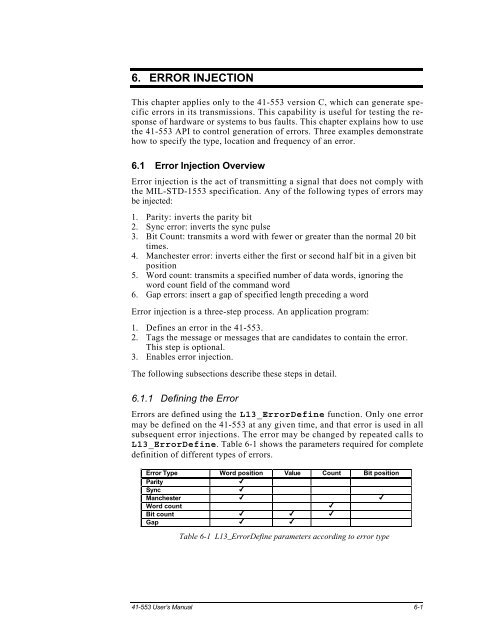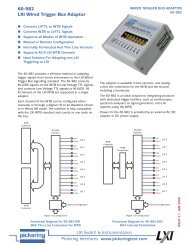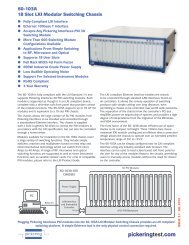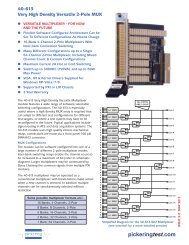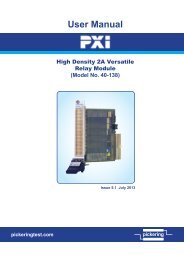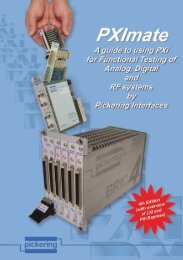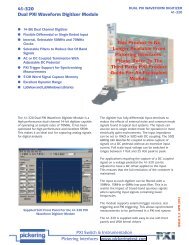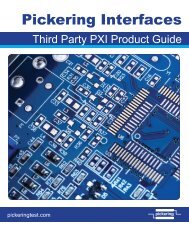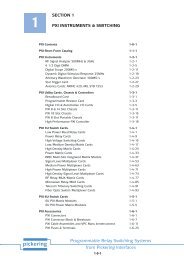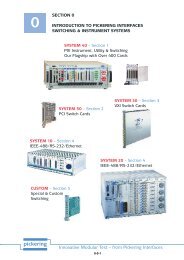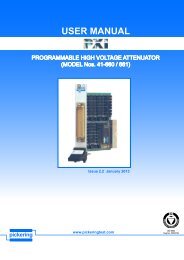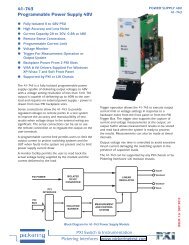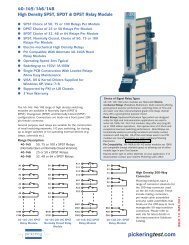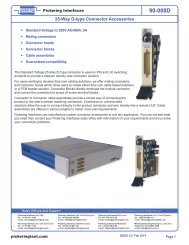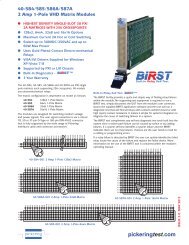41-553M.pdf - Pickering Interfaces
41-553M.pdf - Pickering Interfaces
41-553M.pdf - Pickering Interfaces
You also want an ePaper? Increase the reach of your titles
YUMPU automatically turns print PDFs into web optimized ePapers that Google loves.
6. ERROR INJECTION<br />
This chapter applies only to the <strong>41</strong>-553 version C, which can generate specific<br />
errors in its transmissions. This capability is useful for testing the response<br />
of hardware or systems to bus faults. This chapter explains how to use<br />
the <strong>41</strong>-553 API to control generation of errors. Three examples demonstrate<br />
how to specify the type, location and frequency of an error.<br />
6.1 Error Injection Overview<br />
Error injection is the act of transmitting a signal that does not comply with<br />
the MIL-STD-1553 specification. Any of the following types of errors may<br />
be injected:<br />
1. Parity: inverts the parity bit<br />
2. Sync error: inverts the sync pulse<br />
3. Bit Count: transmits a word with fewer or greater than the normal 20 bit<br />
times.<br />
4. Manchester error: inverts either the first or second half bit in a given bit<br />
position<br />
5. Word count: transmits a specified number of data words, ignoring the<br />
word count field of the command word<br />
6. Gap errors: insert a gap of specified length preceding a word<br />
Error injection is a three-step process. An application program:<br />
1. Defines an error in the <strong>41</strong>-553.<br />
2. Tags the message or messages that are candidates to contain the error.<br />
This step is optional.<br />
3. Enables error injection.<br />
The following subsections describe these steps in detail.<br />
6.1.1 Defining the Error<br />
Errors are defined using the L13_ErrorDefine function. Only one error<br />
may be defined on the <strong>41</strong>-553 at any given time, and that error is used in all<br />
subsequent error injections. The error may be changed by repeated calls to<br />
L13_ErrorDefine. Table 6-1 shows the parameters required for complete<br />
definition of different types of errors.<br />
Error Type Word position Value Count Bit position<br />
Parity<br />
✔<br />
Sync<br />
✔<br />
Manchester ✔ ✔<br />
Word count<br />
✔<br />
Bit count ✔ ✔ ✔<br />
Gap ✔ ✔<br />
Table 6-1 L13_ErrorDefine parameters according to error type<br />
<strong>41</strong>-553 User’s Manual 6-1


